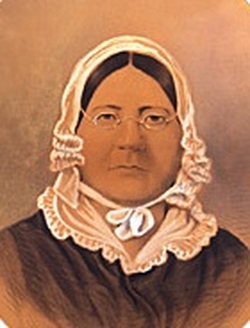 With the Fourth of July right around the corner, many Americans will sing the Star Spangled Banner written by Francis Scott Key. And what did Scott see at twilight's last gleaming during the Battle of Baltimore in the War of 1812? That the American flag, made by Mary Young Pickersgill, was still there. Mary Pickersgill was born in Philadelphia in 1776, the year the Declaration of Independence was signed, to Rebecca and William Young. During the Revolutionary War, Rebecca was a Flagmaker, a profession her daughter would also pick up. Later, Mary would be considered the “Betsy Ross of the War of 1812.” Early Years Mary learned the craft of flag-making from her mother as a child. In 1795, she went on to marry John Pickersgill, a Philadelphia merchant, but he died after the two had only been married for 10 years. At 29 years old, Mary moved to Baltimore and set up a flag shop. The War of 1812 As the British and Americans once again were at war during the War of 1812, Mary’s business largely catered and attracted military clients. In 1813, as the city of Baltimore prepared for an attack, the militia commander at Fort Henry, General George Armistead, placed a tall order. Armistead wanted a flag “so large that the British will have no difficulty seeing it from a distance.” Mary was recommended to him as the woman to make such a flag. And, in fact, her commission included two flags. Teamwork Creating a flag this large required a mammoth effort and so Mary enlisted help from her daughter,mother, nieces and other community seamstresses, and together, the women worked late into the night to complete the flag in six weeks. The result? A storm flag measuring 17 by 25 feet and a second garrison flag, measuring 30 by 42 feet and weighing 50 pounds. The garrison flag transformed Armistead’s vision into a tangible reality. The British saw the flag, saw the troops and so did Francis Scott Key, who was so inspired he wrote a poem about it the morning after the battle. Today, that poem is our National Anthem. Later Years Mary went on flag making and turned a profitable business. She served as an advocate for women and helped champion social issues impacting women. From 1828 to 1851, Mary was the president of the Impartial Female Humane Society helping disadvantaged women find jobs and housing. Mary died in 1857 and was buried in southwest Baltimore’s Loundon Park Cemetery. Her hard work and legacy live on as part of the American Dream and our history. Today, women of all ages, can admire her work on display at the Smithsonian’s National Museum of American History. -Lisa Zimmermann
0 Comments
Your comment will be posted after it is approved.
Leave a Reply. |
Archives
July 2017
Categories
All
|
 RSS Feed
RSS Feed